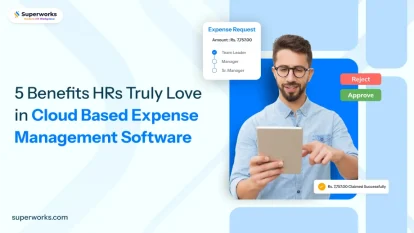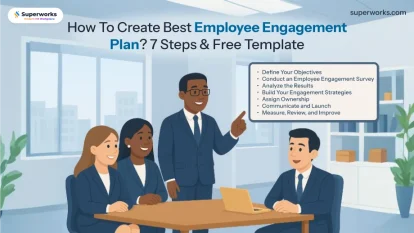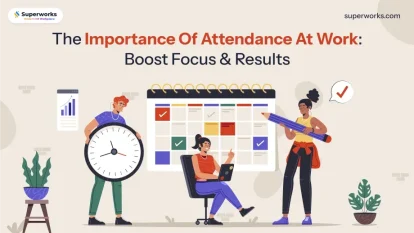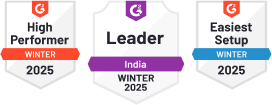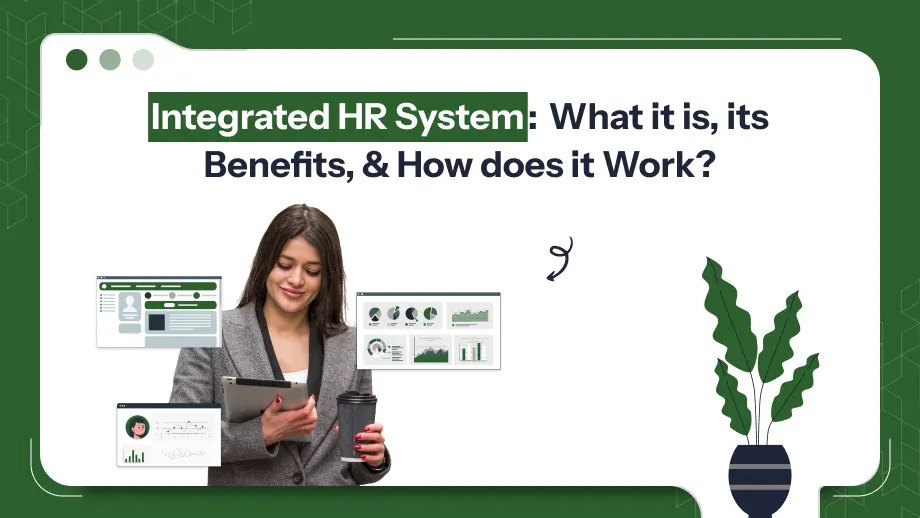
Modern workplaces require smooth HR operations, but most organizations have to deal with HR tools that are not working which hinder efficiency and productivity. From payroll management to employee tracker HR professionals frequently use several software platforms. This can lead to information silos, inefficiencies, and compliance risks.
An integrated HR System helps solve this issue through the integration of every HR function into one platform. This ensures the accuracy of data, automated processes, and efficient HR procedures. Whatever the case, whether it’s payroll, recruitment as well as performance management the tracking of compliance issues the HR integrated system improves the efficiency of employees and their making decisions.
In this post we’ll go deep into the concept of integrated HRM and its main features as well as the way it functions and what benefits it can bring to companies of all sizes.
What is an Integrated HR System?
An Integrated Human Resources System is a central HR system that blends a variety of HR processes like time tracking, payroll, and benefits administration in addition to performance management, and compliance reporting into one integrated system.
Key Characteristics of an HR System Integration:
Centralized Database: All HR data is stored in a single platform, reducing duplication.
Automation: Reduces manual labor in the areas of payroll, attendance, and compliance reports.
Continuous Connectivity: connects Human Resources tools such as the payroll software for recruitment and platforms for learning management.
Employee Self-Service: Employers can navigate and access their data in their own way.
The Real-Time Data Insights: Feature lets HR managers analyze patterns in the workforce with an automated report.
Through the implementation of an HR Integration Solution that eliminates inefficiencies, increases compliance, and boosts employee engagement.
Why Do Companies Need an HR System Integration?
Common Challenges Without an Integrated HRM:
Multiple Disconnected HR Tools: Payroll software, attendance tracking, and recruitment systems operating separately.
Frequent Errors: Manual data entry in different platforms increases the risk of payroll miscalculations and compliance violations.
Time-Consuming HR Processes: Human Resources teams are wasting time updating employees’ records manually on multiple platforms.
Unsatisfactory Employee Experience: Staff members are frustrated with the slowness of time to approve leave, a delay in salary processing, and the absence of self-service alternatives.
HR departments are at risk of compliance because they struggle to keep up with legal requirements because of the fragmentation of the storage of data.
How Does an Integrated HRM Solve These Issues?
One Platform for All HR Functions: No need for multiple software—everything is in one place.
Automation Reduces Errors: Payroll, attendance, and compliance reporting are auto-calculated and error-free.
Better Employee Experience: The employee can keep track of their leaves as well as check their pay slips. They can also change their records.
More Effective Decision-Making: HR professionals have real-time information on workforce patterns and performance indicators.
The HR system integration will ensure that HR personnel can concentrate on their strategic work instead of administrative tasks that require manual effort.
Over 65% of businesses are shifting to Integrated HR Systems!
Cut costs, eliminate manual HR tasks, and enhance efficiency with the best Integrated HR System!
How Does an Integrated HR System Work?
The integrated HR system integrates various HR applications into one database that allows for the seamless flow of data between them.
The Working Mechanism of HR System Integrations:
Centralized Employee Database:
- Stores employee profiles, job details, payroll info, and performance records in a unified system.
- Eliminates redundant data entry across multiple platforms.
Automated Payroll & Attendance Tracking:
- Attendance data is directly linked to payroll, reducing errors.
- Auto-calculates overtime, deductions, and statutory contributions.
Seamless Recruitment & Onboarding:
- Postings for jobs, tracking applicants as well as hiring workflows can be managed through the software.
- New employees are automatically added to payroll & compliance systems after onboarding.
Performance & Learning Management Integration:
- It tracks employee KPIs, education development, and appraisal cycles.
- Users can use the self-service portal to set objectives, schedule training and give feedback.
Compliance & Taxation Management:
- Ensures real-time tax calculations and labor law compliance.
- Produces reports for audits as well as tax filings as well as government regulations.
With HR system features, that can be automated, businesses can streamline tedious tasks, boost the accuracy of HR processes, and simplify processes efficiently.
Key Benefits of an Integrated HR System
Improved Efficiency & Time Savings
This eliminates the need for manual HR and HR professionals can be focused on employee engagement and strategies.
Enhanced Data Accuracy & Compliance
Reduces errors in payroll, taxation, and employee records through real-time updates and automation.
Better Employee Experience
Employees can access HR services (leave applications or salary slips, and review of performance) without the intervention of HR.
Cost Savings
Lowers operating costs through the elimination of the need for multiple subscriptions to software and administration tasks that are manual.
Data-Driven Decision Making
Real-time data analytics can help HR managers determine trends in the workforce, increase retention, and increase the efficiency of the hiring process.
Seamless Scalability
An integrated HRM grows with your business, allowing easy addition of new features and modules.
Improved Security & Compliance
Assists in the GDPR’s, SOC 2. ISO standards to protect data and ensure confidentiality.
In implementing an Integration of HR, businesses can increase the efficacy, accuracy, and satisfaction of employees.
How to Choose the Right Integrated HRM for Your Business?
Selecting the most Integrated HR system to suit your needs is an important decision that will help you choose the best HR system software, increase efficiency, and increase employee satisfaction. But, given the variety of choices that are available to businesses, they must consider several factors to choose a solution that is compatible with their business objectives and needs.
The following are key factors to consider to consider when selecting the right HRM system for your organization:
Your Business Size & Needs
Small Businesses & Startups:
- Need a cost-effective, easy-to-use HR solution with basic automation for payroll, leave management, and employee records.
- A cloud-based SaaS HR Management System is ideal for flexibility and affordability.
- Avoid overly complex systems that require dedicated IT teams for maintenance.
Mid-Sized Businesses:
- Require a more robust hr software in India -an integrated system that includes performance tracking, compliance tools, and automated workflows.
- Third-party integrations should be supported to payroll, accounting, and the employee engagement platform.
- Information-driven insight to help workforce planning and decision-making is becoming essential.
Core HR Functionalities:
Payroll & Benefits Management – Automates salary processing, tax deductions, and benefits distribution.
Time and Attendance Tracking – integrates biometric systems including mobile check-ins, mobile check-ins, as well as timetables for work.
Recruitment and Onboarding – is a tool that simplifies the process of posting job ads, tracking applications as well as Onboarding workflows.
Performance & Learning Management – Supports goal tracking, appraisals, and training programs.
Integration Capabilities:
HR processes do not operate in isolation—an Integrated HR system with other business systems is necessary for a smooth workflow.
Check for integration with:
Accounting Software (QuickBooks, Tally, Xero) to allow payroll synchronization.
ERP Systems (SAP, Oracle, Microsoft Dynamics) for continuous business-wide operation.
CRM & Project Management Tools to plan your workforce and increase efficiency.
Cloud vs. On-Premise:
One of the most important business decisions to make is whether they want to use the cloud-based HRMS or go with an on-premise system.
Cloud-Based HR System
Access from Anywhere – Employees & HR teams can work remotely.
Automatic Updates – Regular security patches and feature enhancements.
Cost-Effective – Lower upfront costs with subscription-based pricing.
On-Premise HR System
Higher Data Control – Stored on company-owned servers for added security.
Customization Flexibility – Allows for deep customization based on business needs.
One-Time Investment – No recurring subscription costs (except maintenance).
User-Friendly Interface:
The HR system integration needs to be simple to use by HR managers, HR professionals, as well as employees.
Simple Dashboard and Navigation HR departments should have access to payroll, attendance, recruiting as well as reports in a snap.
Self-Service Portals for Employees The employees must be able to view their payslips as well as update their information, request time off, as well as access online training courses.
If you’re searching for the best HRMS and payroll software in India, make sure it meets legal compliance requirements and can support automated real-time processing.
Future of Integrated HR Systems
The HR technology landscape is constantly changing by incorporating AI as well as automation and predictive analytics. The future trends in HR system components include:
AI-powered HR chatbots automatize HR query processing and increase employee satisfaction.
Predictive Analytics to Plan Workforce Artificial Intelligence-powered insights to help with the hiring process, retention of employees, as well as the ability to forecast performance.
Blockchain is a great tool for HR Data Security: Secure pay, credentials, and monitoring of compliance.
Mobile-First HR Management: HR solutions optimized for remote and hybrid teams.
When they adopt integrated HR solutions Businesses can be ahead of the curve and ensure their HR functions.
Conclusion: Why Invest in an Integrated HR System?
A properly-integrated HR system isn’t an option anymore. It’s an absolute requirement for any business that wants to grow, enhance HR efficiency, and improve the employee experience.
If you’re a business struggling with HR-related tasks that are manual as well as disconnected systems, or challenges with compliance is time to consider investing in an HR system that is integrated for efficiency, precision, and better decisions.




